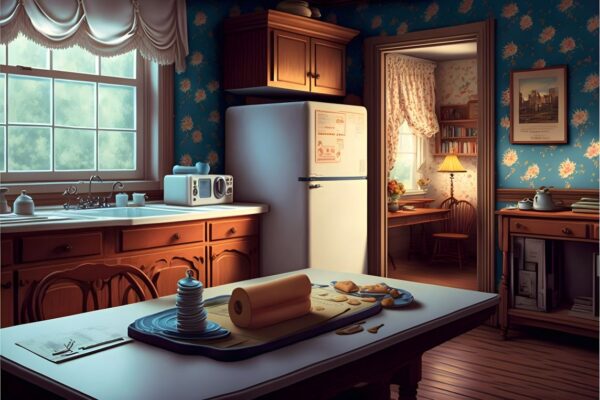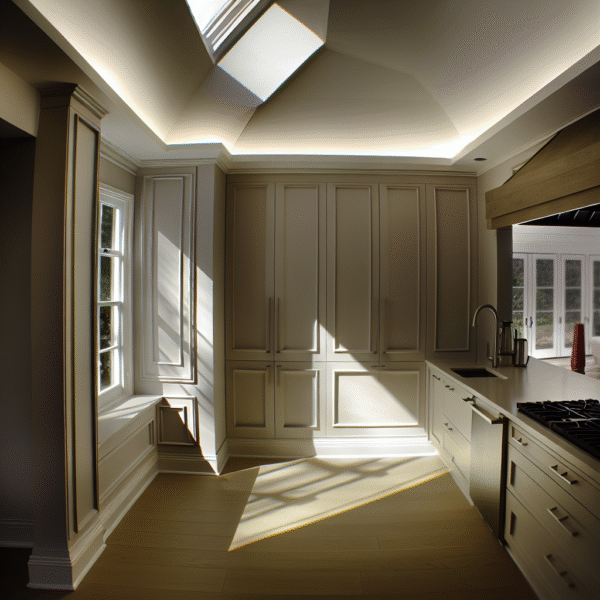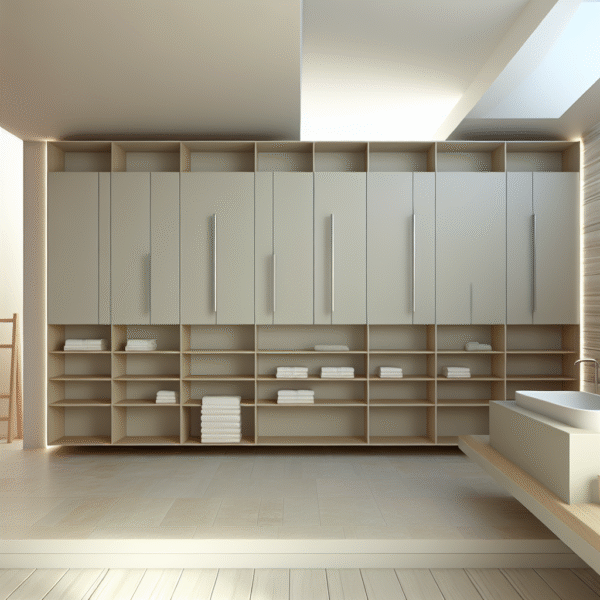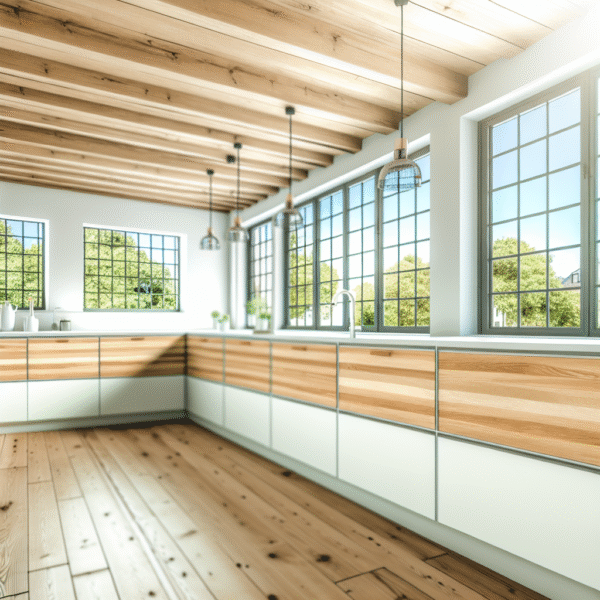Understanding the Parts of a Cabinet
Understanding the parts of a cabinet is essential whether you’re renovating a historic Savannah home or optimizing camper storage for a Pacific Northwest road trip. Cabinets appear everywhere—urban kitchens, RVs, tiny homes, and rustic cabins—but their internal components often go unnoticed. Knowing these elements helps you identify quality, upgrade smartly, and design efficient storage for your lifestyle.
The Cabinet Box: Core of Structure and Storage
At the heart of any cabinet is the cabinet box (also known as the carcass). This is the main structure that holds everything together. Typically constructed from plywood, MDF, or particleboard, cabinet boxes are the foundation of strength and usable space. From mountain cabins in Jackson Hole to DIY workshops in the Midwest, these materials balance durability and cost.
There are two primary styles: face-frame and frameless. Face-frame cabinet boxes feature a hardwood frame around the front and are common in traditional homes from Charleston to New Orleans. Frameless varieties, often associated with modern designs in cities like Portland or Marfa, eliminate the face for a sleek, contemporary look—ideal for maximizing access and space.
Next time you’re staying in an Asheville rental or tweaking your van interior in Seattle, open a cabinet. Are the shelves sagging? Are the joints solid? Understanding the cabinet’s box construction empowers you to evaluate quality and longevity at a glance.
Cabinet Doors: Function Wrapped in Style
Cabinet doors are where function and design converge. They add personality to kitchens, campervans, and bathroom spaces—ranging from ornate, hand-carved wood in San Francisco’s Victorian homes to minimalist laminate panels in Scandinavian-style studios.
Common cabinet door types include:
- Inset doors: These sit perfectly flush within the cabinet frame, offering a clean, custom-built look—especially popular in Craftsman-style homes in Seattle.
- Overlay doors: These cover all or part of the cabinet face. Found frequently in budget-friendly kitchen designs across Boulder or Ann Arbor, overlay doors are practical and easy to install.
- Slab doors: With flat, unembellished fronts, these are a go-to for modern aesthetics in places like Sedona eco-lodges or tiny homes along the Oregon Coast.
Climate matters when selecting cabinet doors. Humid environments, such as the Deep South, can cause warping in natural wood. In dry, arid climates like Arizona, MDF options may become brittle. For RV conversions and mobile living, choose doors made from lightweight, moisture-resistant materials.
Drawers: The Quiet Organizers
Drawers may be behind-the-scenes workers, but they’re vital parts of a cabinet’s overall utility. Whether you’re storing utensils near the Finger Lakes or stashing camping gear in your Zion-bound RV, understanding how drawers function can improve your storage strategy.
Each cabinet drawer is built from several key components:
- Front panel: The visible face that often matches your cabinet doors for cohesiveness.
- Back panel: Structural and functional, this piece keeps contents stable—essential for heavy loads like cast iron skillets or pantry items.
- Sides: These connect panels and typically contain drawer slide mechanisms.
- Bottom panel: Often thinner than the sides and back, this piece must still handle a surprising amount of weight, especially in adventure vans or high-traffic kitchens.
Pro tip: Upgrade to soft-close slides for smoother operation and less wear. Especially beneficial for mobile settings like RVs and tiny houses, they add both function and finesse.
Cabinet Hinges and Drawer Slides: Small Parts, Big Impact
Cabinet hinges and drawer slides may be small, but they dramatically affect longevity and ease of use. Knowing which kind of hardware is best for your space ensures quiet, smooth, and secure movement—whether you’re parked along the Blue Ridge Parkway or sipping coffee in a minimalist L.A. studio.
Common hinge types include:
- Exposed hinges: Visible from the outside, these add rustic charm—great for log cabins in Montana or farmhouses across upstate New York.
- Concealed hinges: Hidden within the cabinet, these lend a sleek look and are perfect for modern builds or coastal properties in Big Sur.
Drawer slide types vary to suit usage:
- Side-mount slides: Durable and ideal for heavier items like pots and pans in mountain lodges.
- Center-mount slides: Simpler and more compact—commonly used in lightweight cabinetry.
- Undermount slides: Hidden and smooth, providing a clean aesthetic fit for upscale rentals and urban condos.
Outdoor enthusiasts take note: lockable drawer slides are a must for van conversions and off-grid trailers. They prevent spills and rattles while driving over rugged terrain like Moab or Yosemite.
Cabinet Shelves and Supports: Easy Customization
Shelves are among the most flexible parts of a cabinet. Whether you’re customizing storage for a weekend cabin in Lake Tahoe or outfitting a guesthouse in Bozeman, adjustable shelving lets you adapt cabinets to your lifestyle.
Most shelves are mounted with either pegs (for adjustability) or fixed brackets. Look for durable materials like laminated particleboard for versatility or marine plywood in humid coastal areas like Gulf Shores or Olympic Peninsula cottages.
Creative shelf configurations could include:
- A travel coffee setup in an upper kitchen cabinet on a mobile tiny home
- Child-friendly stacking in a vacation rental near Lake Michigan
- Custom bins for gear and maps in an adventure-ready trailer near Grand Canyon
Quality shelving equals better organization, less clutter, and fewer headaches on the road or at home.
Toe Kicks, End Panels, and Fillers: Finishing Pieces That Matter
The smaller parts of a cabinet—like toe kicks, end panels, and fillers—play vital roles in function and appearance. Though easy to overlook, they contribute to polished finishes and improved usability in kitchens, bathrooms, and mobile setups alike.
Toe kicks are the recessed bases of bottom cabinets, reducing accidental stubs and making standing near the counter more comfortable. Upscale kitchens in Napa or Santa Barbara sometimes feature decorative toe kicks for extra flair.
End panels cover the sides of cabinet runs and tie the design together. These are commonly overlooked in cost-cutting renovations but can make a massive difference in design harmony—especially in open layouts or coastal kitchens in Haleiwa.
Fillers help bridge small gaps between cabinets and walls. These are essential for custom fits in older homes or uniquely shaped RV interiors. Fill gaps creatively by integrating storage features like magnetic knife strips or towel bars for added utility without taking up extra space.
Why Knowing the Parts of a Cabinet Improves Every Space
Familiarity with the parts of a cabinet gives homeowners and travelers a real advantage. From identifying durable construction in a Tybee Island beach house to fixing a loose drawer slide in a camper by the Rockies, this knowledge makes you more resourceful. Plus, it equips you to customize storage for real life—storing everything from local wines and reusable mugs to board games and hiking boots.
Cabinets are more than storage—they’re part of how you live. Understanding their anatomy helps you recognize quality, implement smart upgrades, and solve problems on the fly. Whether at home or on an epic road trip, confidence in the parts of a cabinet transforms your day-to-day experience.





